
What is the problem?
With the beginning of the full-scale invasion, Lviv became Ukraine's humanitarian and medical hub, hosting more than five million people. Many wounded were brought there from the first days of the full-scale war. The city provided housing, food, and clothing for thousands of displaced persons and had to provide medical assistance to war survivors with severe injuries from shelling, burns, and amputations.
"Faced with such cases, we did not know what to do. At that time, our surgeons were unprepared for these kinds of injuries," says Solomiia Yakubechko, head of the communication department of the First Medical Association of Lviv. "We were forced to send patients abroad for treatment."
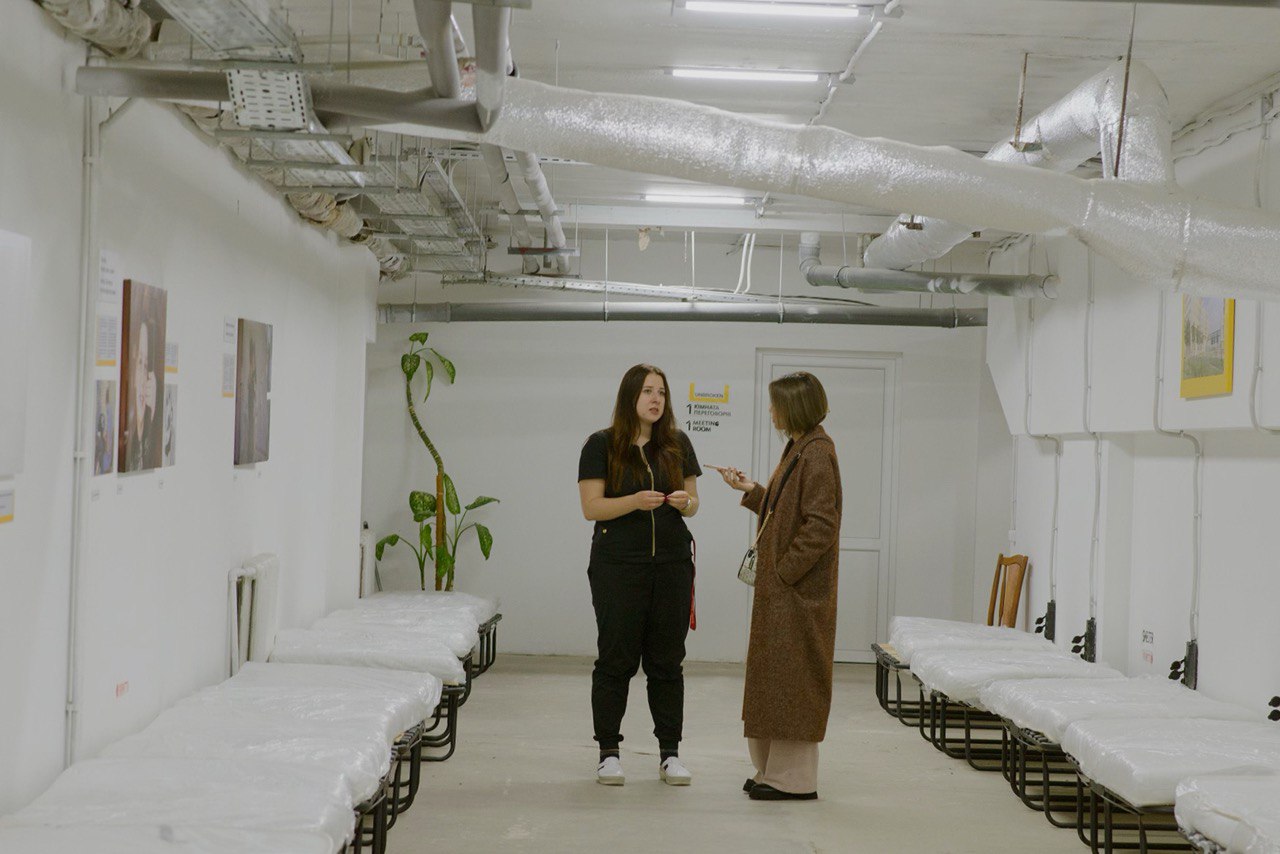
Photo: Rubryka. Solomiia Yakubechko standing in the bomb shelter of St. Panteleimon Hospital
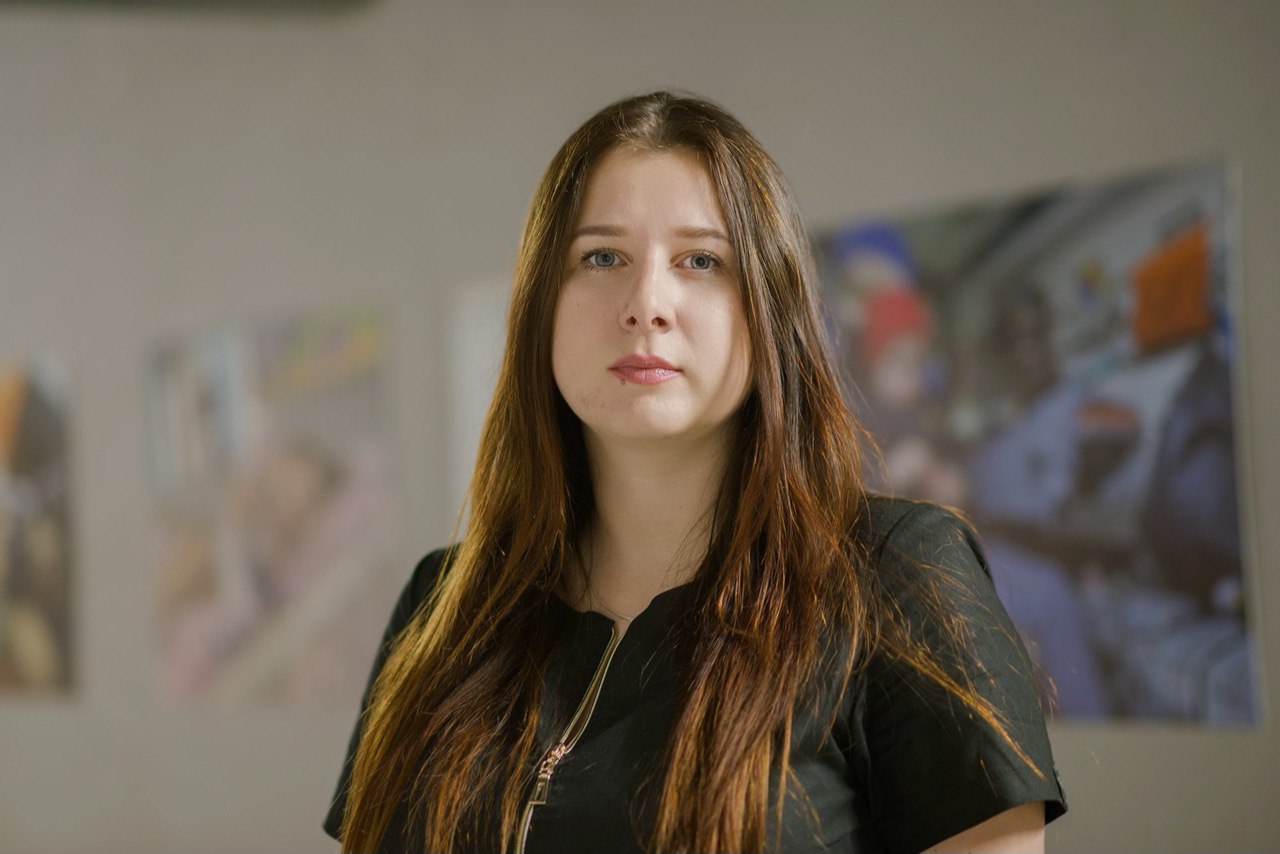
Photo: Rubryka. Solomiia Yakubechko
Manufacturing prosthetics and rehabilitating patients with amputated limbs has been done in Ukraine before. But war is a particularly harsh catalyst for the medical field, requiring solutions to problems that were not pressing before.
Before the full-scale invasion, prostheticswere not created at hospitals, but at private workshops that provided rehabilitation services. The limb was amputated in one place, the prosthetic was made in another, and psychological support had to be sought elsewhere. The need for a place where all three components will be brought together has been growing daily in recent months.
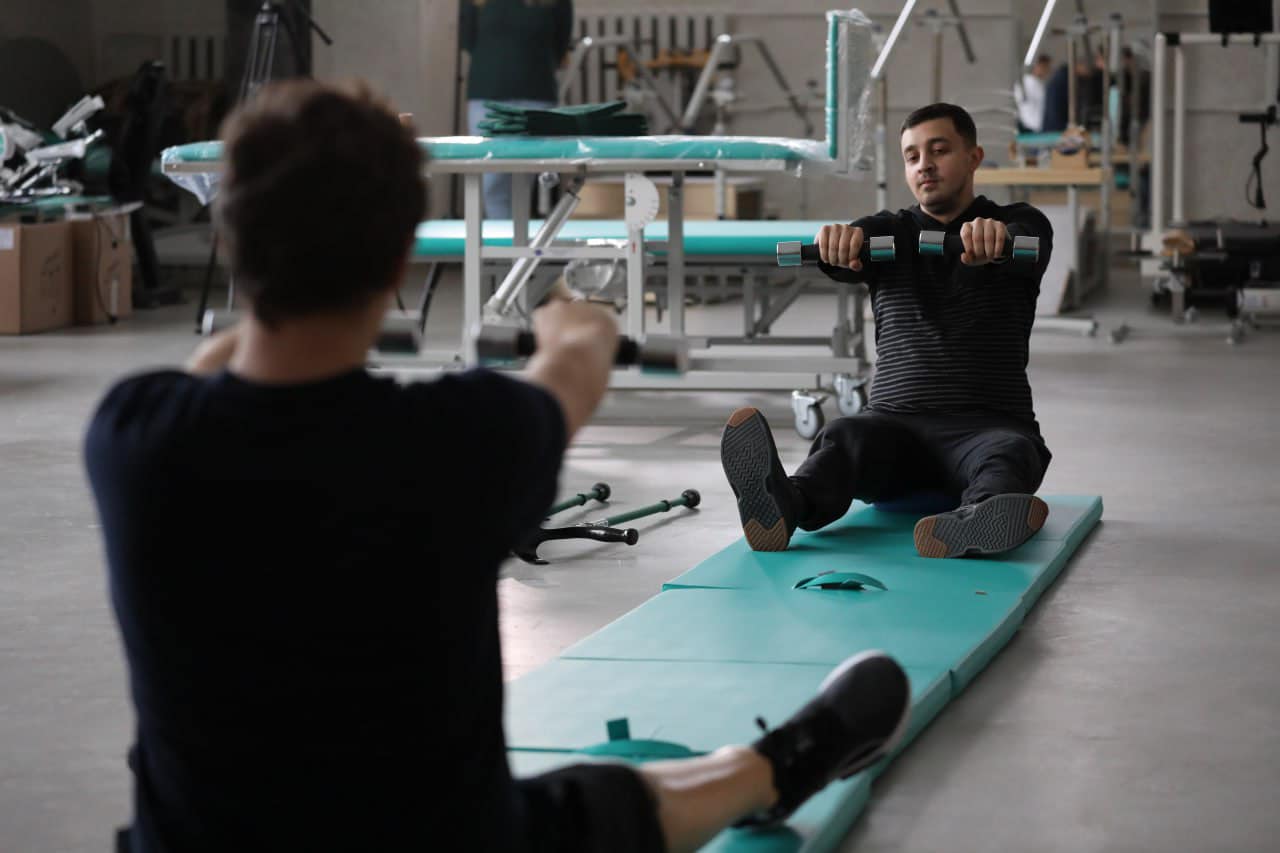
Photo: UNBROKEN Facebook page. A patient going through rehabilitation in the UNBROKEN centre
There is still no established practice in Ukraine: after amputation, the patient is left to look for prosthetic workshops, rehabilitation specialists, and psychologists for support on their own. Doctors often do not communicate with each other or follow up with the patient after amputation. For a person who has already faced a dramatic change in their life situation, it can be a tremendous additional stress to find a prosthetic workshop, collect documents, and face the arduous process of rehabilitating their muscles.
A person who has lost a limb needs more than just a prosthetic replacement. Rehabilitation is a complex and lengthy process. It begins not from the moment of installation of a new limb, but during amputation. Communication between surgeons, prosthetists, rehabilitators, and psychologists who work with the patient is essential.
What is the solution?
The First Medical Association of Lviv is a network that includes three hospitals, a polyclinic, and a rehabilitation center in the suburbs. Today, the Nezlamni Center operates on the basis of this medical association.
The National Rehabilitation Center is already in the final stage of construction and will be opened in April. These are seven floors for rehabilitation with improvised apartments and even a store so that the patient can prepare as much as possible for new living conditions. It will specialize in reconstructive surgery, orthopedics, and psychological support of patients.
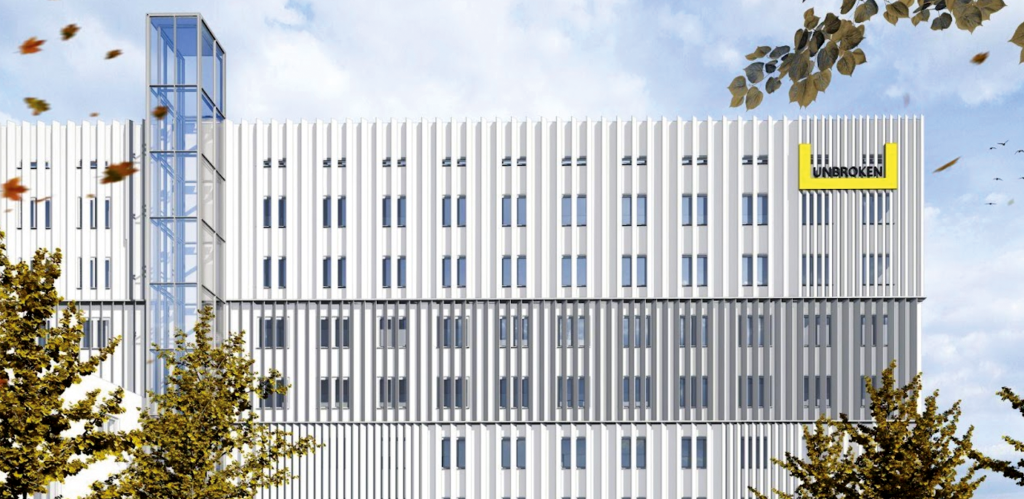
Photo: UNBROKEN. Project of the National Rehabilitation Center Nezlamni
"The patient should not seek help at different medical institutions. A person comes, for example, for prosthetics — and a multidisciplinary team must work with them: a surgeon, a traumatologist, a psychotherapist, a physical rehabilitation specialist," explains Yakubechko.
According to Yakubechko, no similar medical institution in Ukraine offers such an approach. Rehabilitation abroad is often too complex for Ukrainians, involving moving to a foreign country, facing language issues, and separation from loved ones.
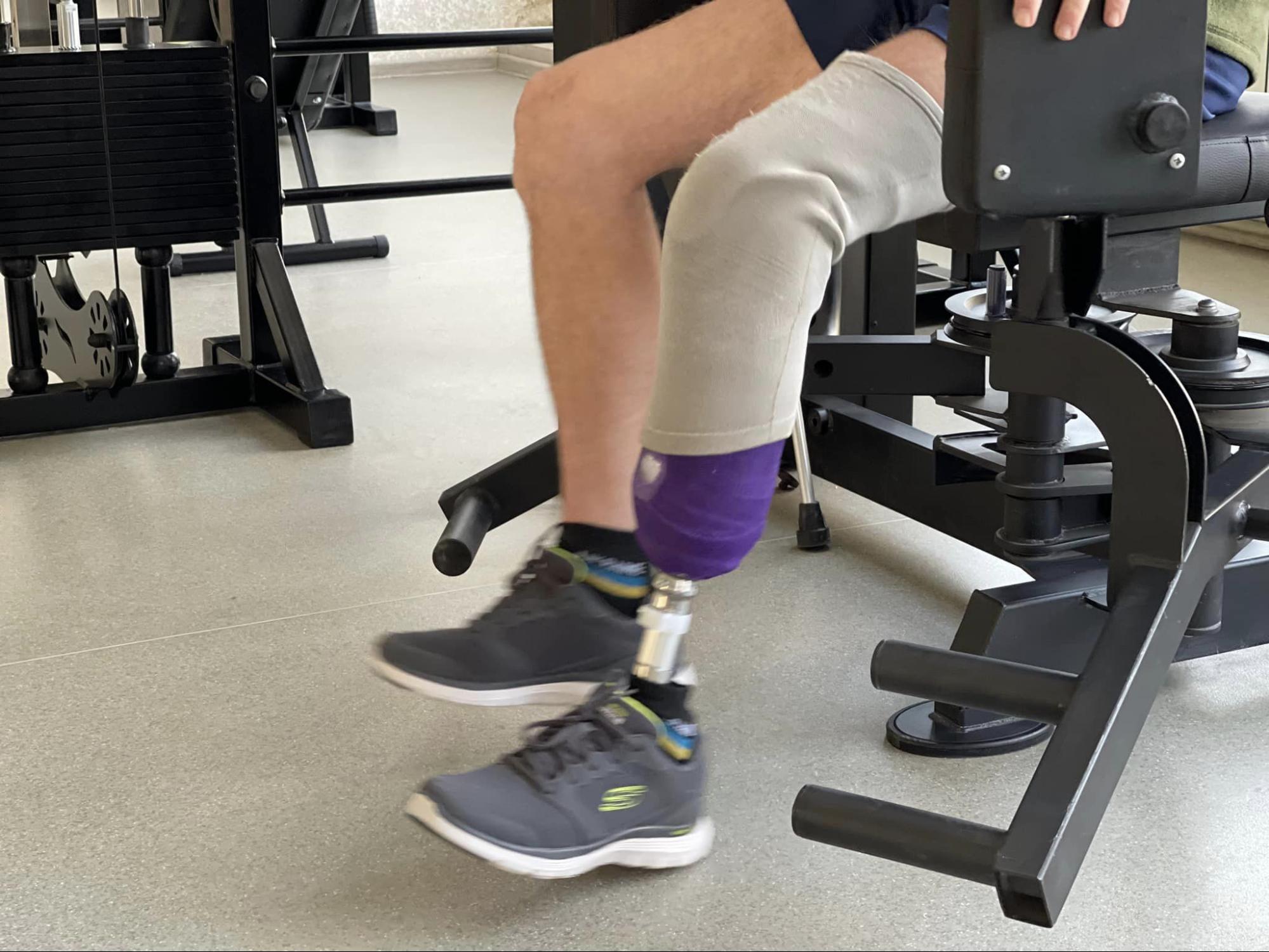
Photo: UNBROKEN Facbook page
Amputation, prosthetics, and rehabilitation are all components of a single integrated process. The doctors of the UNBROKEN project implement the solution uniting them under one roof, allowing patients to recover comprehensively after injuries.
How does it work?
What is the Nezlamni center?
"At the beginning of the full-scale invasion, we became a kind of medical hub for the whole of Ukraine," says Yakubechko.
The medical association is one of the largest medical institutions in the country, with about 1,400 beds. Its medical facilities are multidisciplinary, but amputation, prosthetics, and rehabilitation are separate and complex processes united by common procedures and the same goal. That is why the idea of creating a separate rehabilitation center arose, according to Yakubechko: so that the patient does not have to look for where to get a prosthetic after amputation, where to undergo rehabilitation, and find a psychologist.
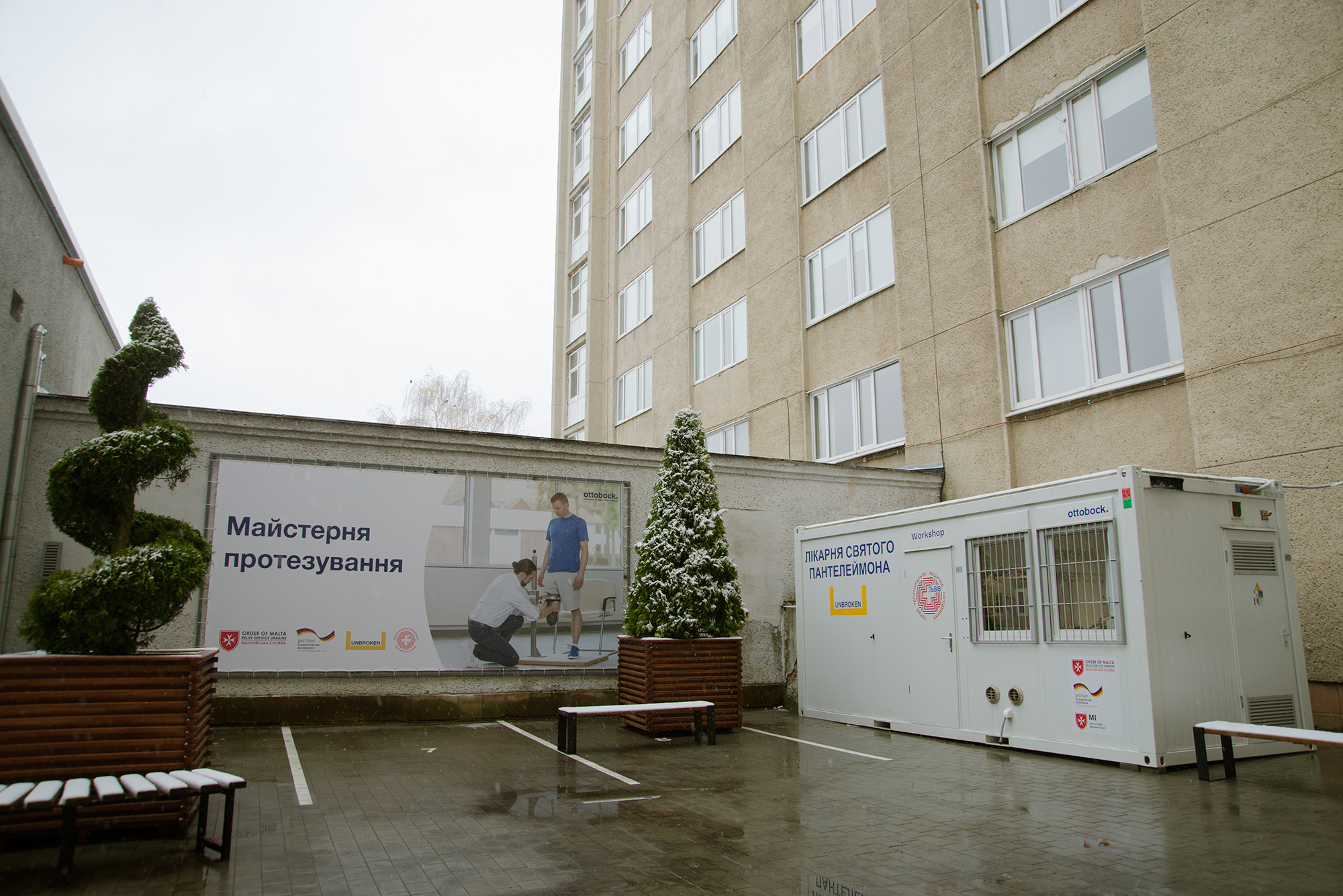
Photo: Rubryka. Prosthetic Workshop of the Nezlamni Center
"A person may not even know what exactly they need because they have never encountered such a thing. They come to one place, and the doctors already decide what kind of help is needed in this particular case," explains Yakubechko.
When a patient enters the center, several specialists work with them at once, looking into their problems, each from their own point of view. If the patient's condition is not critical, surgeons can consult with prosthetists before amputation to determine which degree of amputation will be optimal for later prosthetics and faster rehabilitation.
"We have both reconstructive surgery and prosthetics. This, of course, is not something new for Ukraine," Yakubchenko tells Rubryka. "But our differentiation point is that a multidisciplinary team works with patients, including mental health specialists."
The medical association says that psychological support plays one a critical role in patients' recovery process. Rehabilitation is not just amputating a limb and installing a prosthetic. It can take six to 12 months between the date of amputation and when the patient leaves the hospital with a new prosthetic. During this period, a person goes through complex stages of physical and mental preparation, acceptance of the situation, and learning to live in a new way.
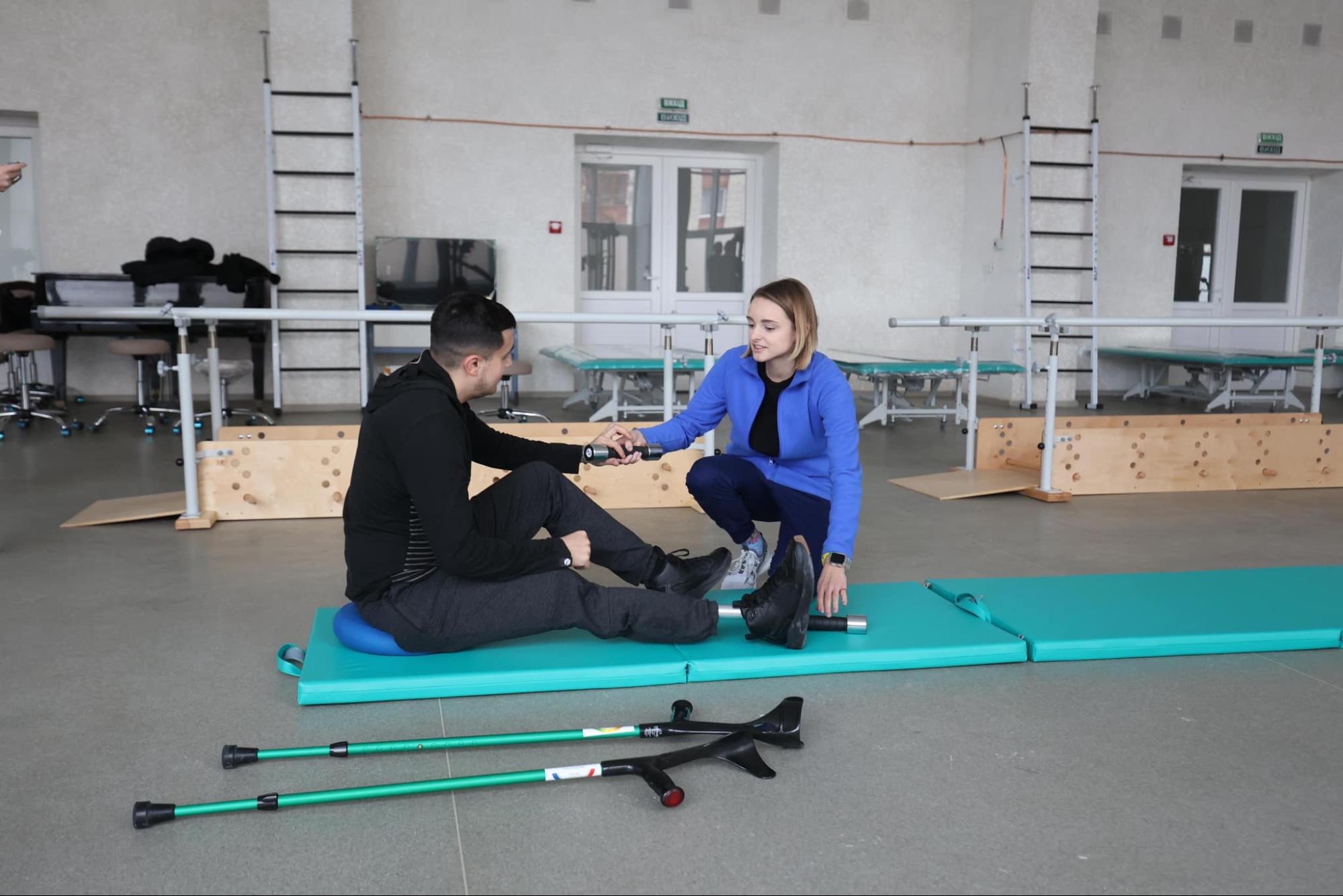
Photo: UNBROKEN Facebook page
"We started inviting foreign specialists to us, and the whole world responded – specialists from the USA, Britain, Canada, and other countries came to Ukraine," Yakubchenko continues. "Ukrainian surgeons, prosthetists, and psychologists also travel abroad for training. Above all, their experience and knowledge are important to us. After all, we strive to implement them here in Ukraine."
According to Yakubchenko, traveling abroad is not always a guarantee that a patient will immediately have the best possible prosthetic.
Prosthetics can be a very long-term process. A military man recently returned from Germany and was told to wait six months for a regular hook. For example, bionic hand prosthetics can take six months or even a year, depending on the situation, in addition to future rehabilitation. To have the opportunity for patients to get a high-quality prosthetic and undergo rehabilitation in Ukraine is an urgent task for the entire industry today.
How are prostheses made?
A prosthetics workshop operates on the basis of Lviv Saint Panteleimon Hospital. It was handed over to Ukraine by the Maltese Service with the support of the German government. The workshop consists of a container for making prostheses and a room for fitting and plaster negatives. It is here that Nazar Bagniuk, a prosthetist at the Nezlamni Center, works.
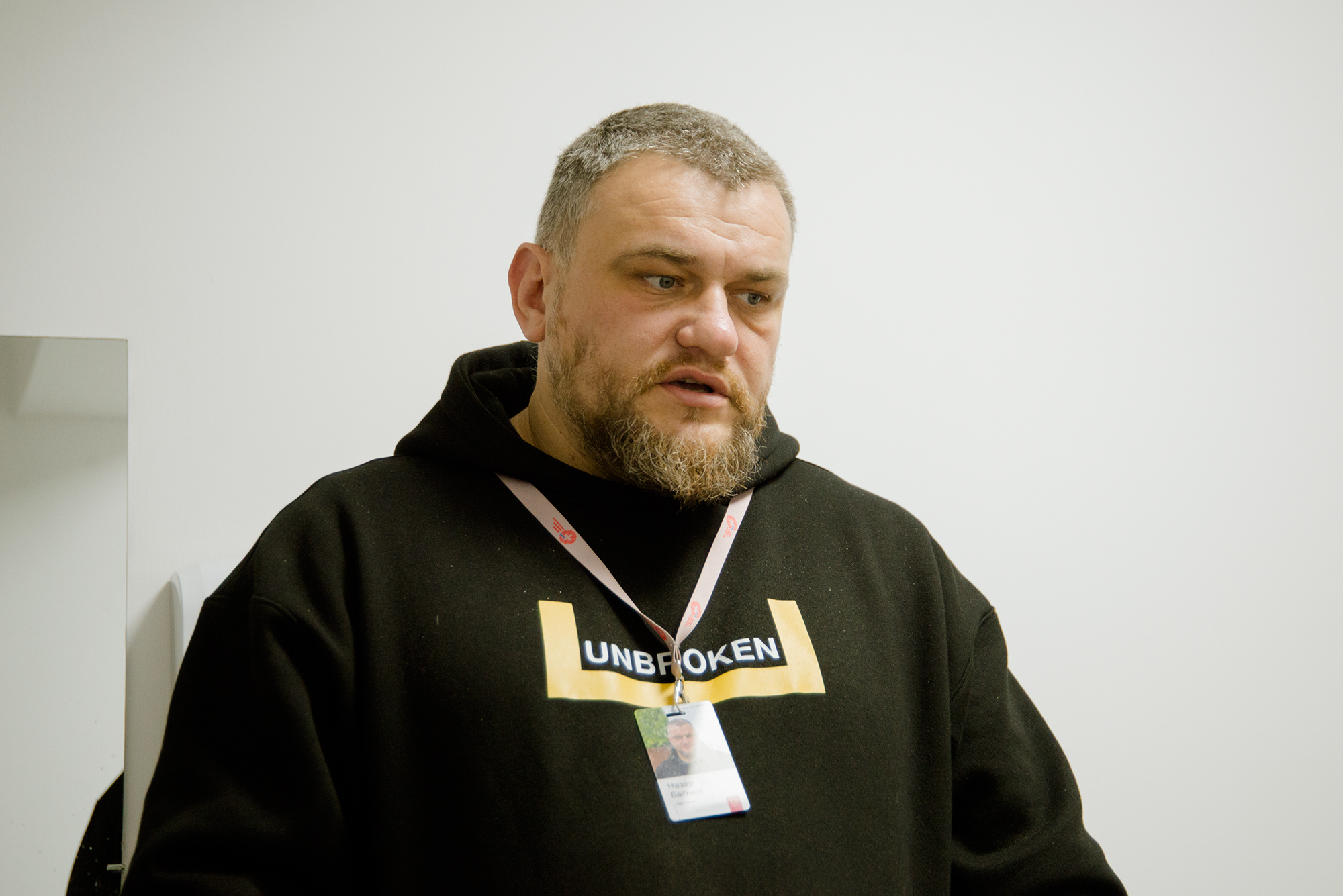
Photo: Rubryka. Nazar Bagniuk
Making a prosthetic for a specific patient consists of several stages. First, a plaster negative is created as a model of the future prosthetic, Bagniuk explains. Then, technical refinements so that the model is functional and of a high quality. After that, a test sleeve is made, which the patient can try on for fitting. It is usually transparent to see how it fits the limb and whether there is any extra space. Next, a test prosthetic is assembled, and a person lives with it for a certain time to get to know how it works and work out any inconveniences, before specialists correct it and the patient receives a full-fledged limb prosthetic.
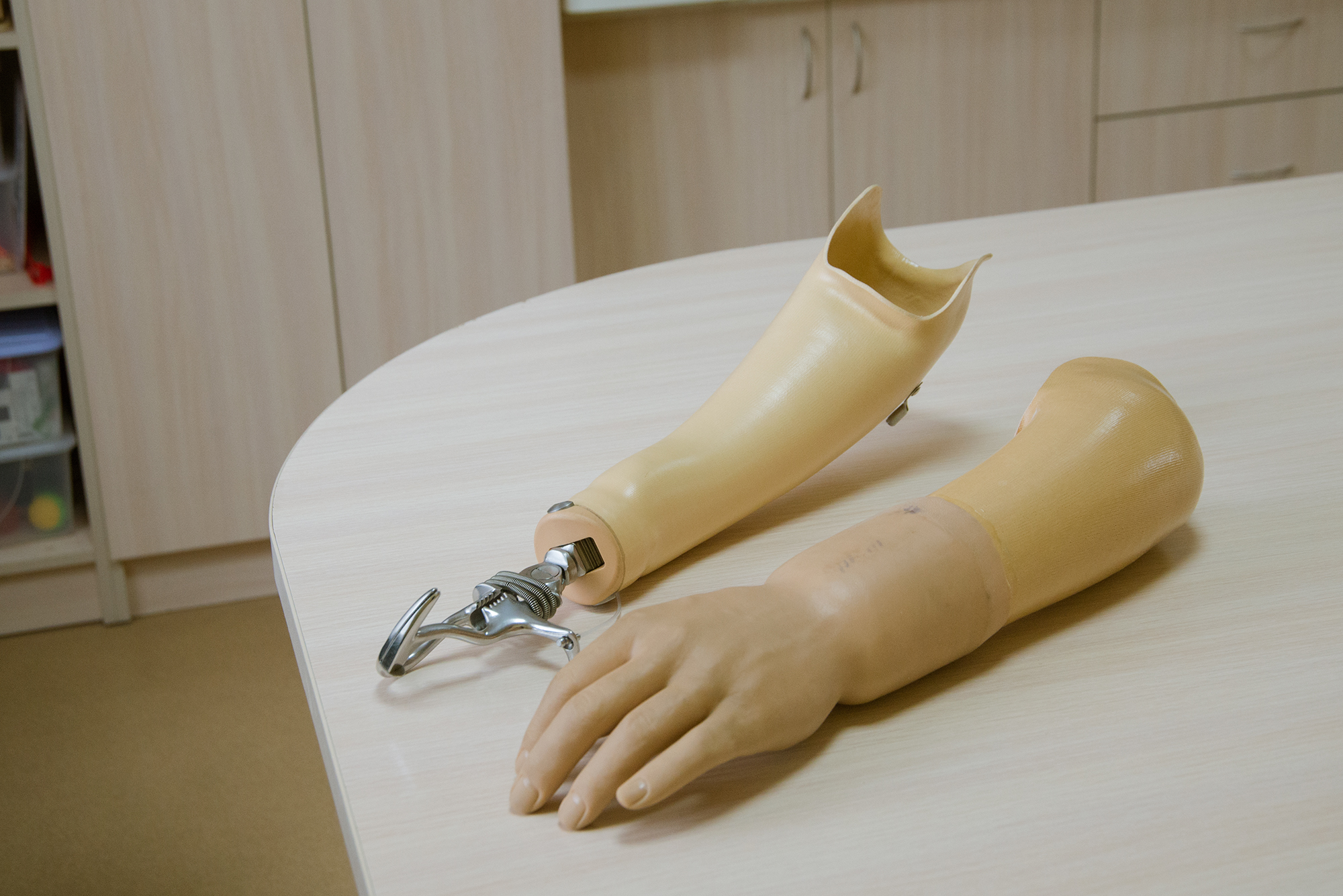
Photo: Rubryka
In general, all prostheses have two main manufacturing stages. Whole components that need not be adjusted to a specific patient — for example, feet, knees, adapters — are manufactured and purchased, mainly from abroad.
The second stage is the manufacture of stump receivers:parts of the prosthetic that will connect the part of the limb that remained after the amputation to the prosthetic itself. This stage requires individual work with each patient. After all, everyone has a different level of amputation and the situation with their damaged limb.
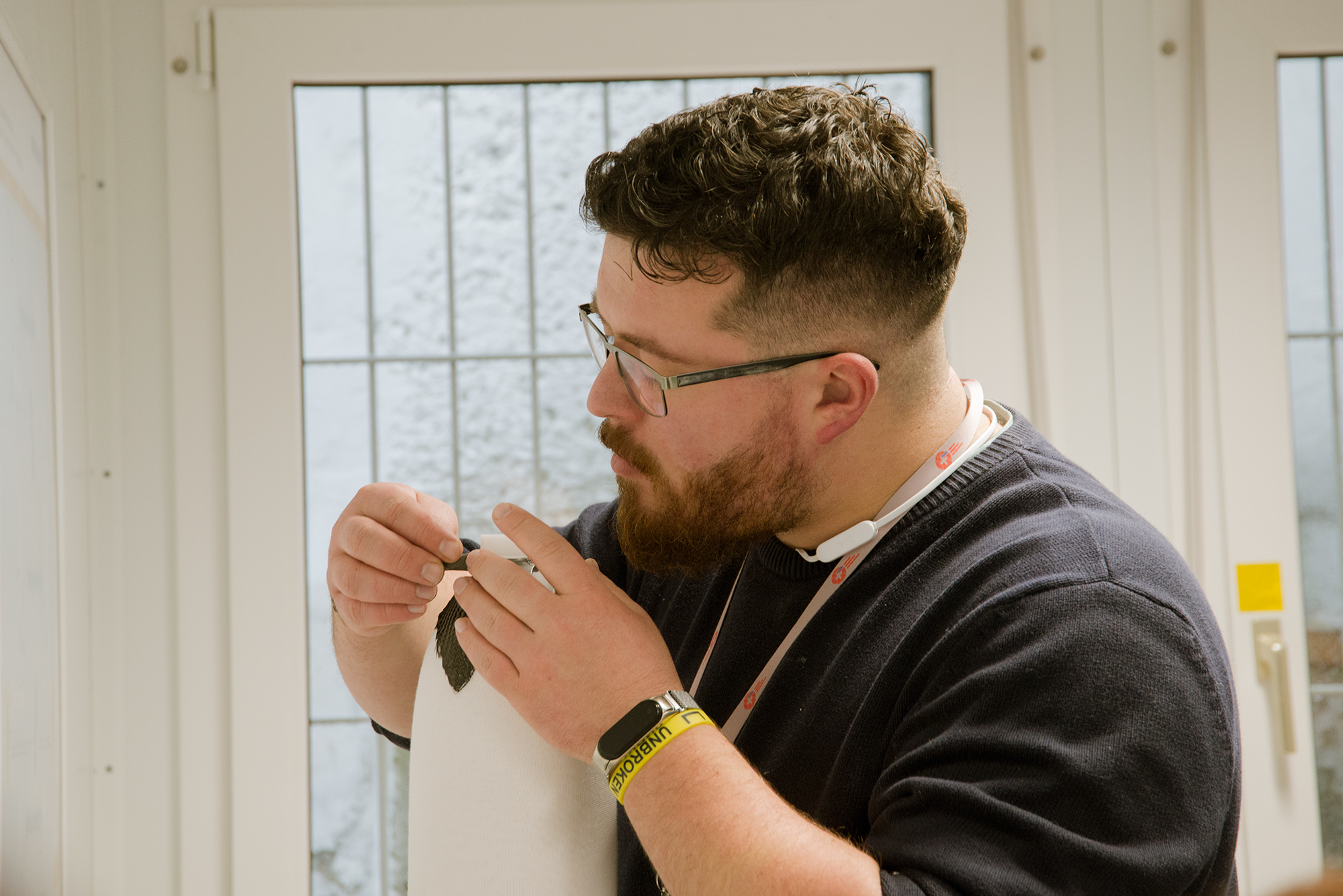
Photo: Rubryka
"More time is spent not on the production of the prosthetic itself, but on the development of the plaster negative," Bagniuk explains to Rubryka. "Currently, we deal exclusively with first-time patients — people who did not have a prosthetic before. They do not know what to pay attention to or how the prosthetic should feel. That's why you often have to guess what needs fixing and how."
There are also cases when the amputation has been done in such a way that it is impossible to place a prosthetic. In those cases, re-amputation may be necessary. This is a consequence of the fact that prosthetic workshops and surgery are separated in Ukraine. They even belong to different ministries: hospitals are subordinate to the Ministry of Health, and prosthetics to the Ministry of Social Policy.
Doctors often do not understand what to do next. For example, the leg may have been amputated to save the patient's life — from the medical point of view, the problem is solved, and the person then has to look for a place to get prosthetics. At St. Panteleimon Hospital, this process happens continuously, and different departments communicate with one another. For example, amputation doctors can consult with prosthetists about what level of amputation will be best — whether this or that amputation will be functional, how much can be left, what to fight for, and what not to fight for, explains Bagniuk.
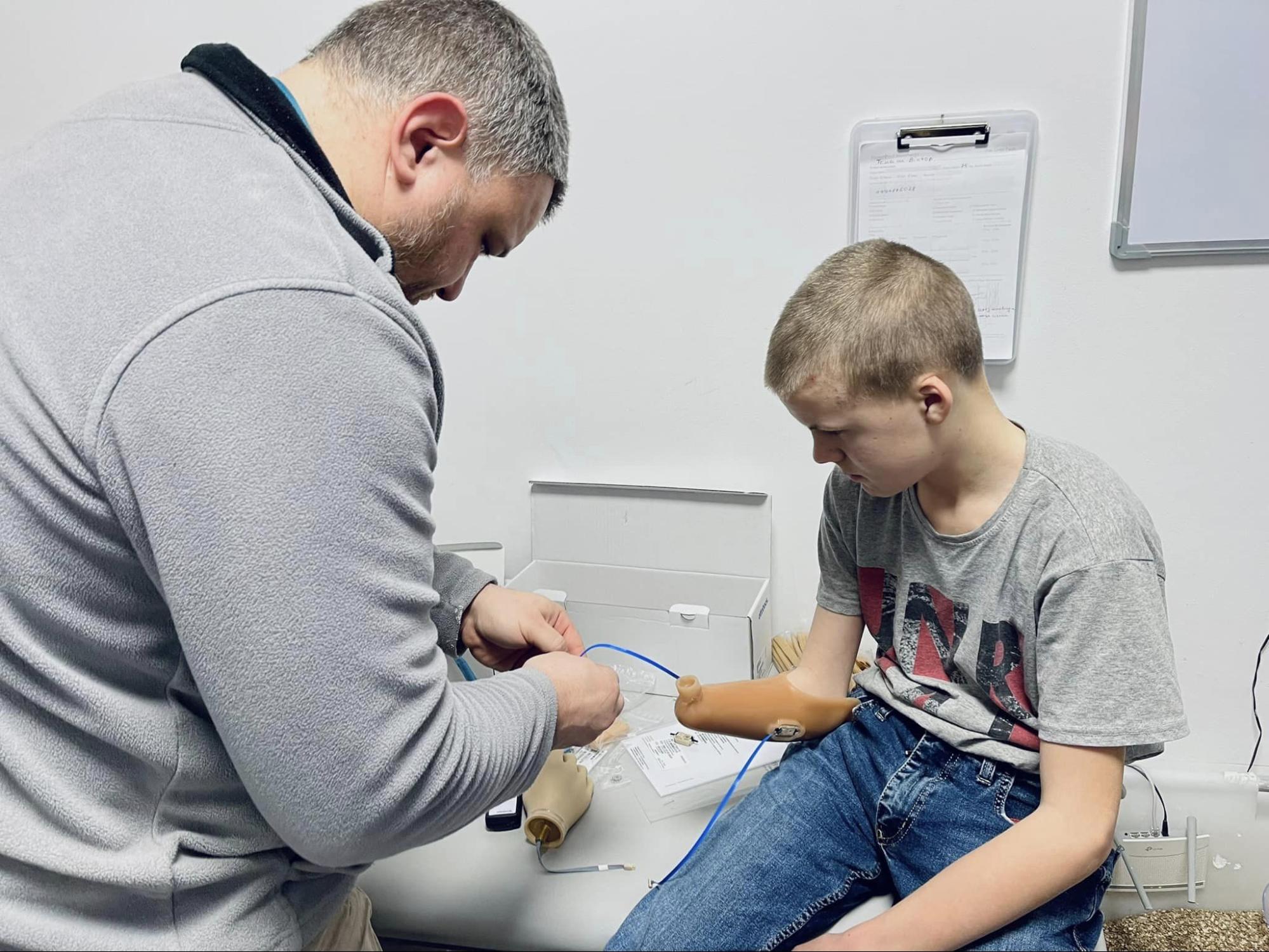
Photo: UNBROKEN Facebook page. 13-year old Dmytro is getting his prosthesis
The specialist adds that if the patient's condition is critical and their life depends on it, then the priority is speed – not communication between doctors. However, if there is such an opportunity, an interdisciplinary approach makes the prosthetics and rehabilitation process faster and easier for the patient.
Today, many of the center's patients have not undergone post-operative rehabilitation — neither psychological nor physical. Therefore, as best as possible, doctors try to close these gaps through their own efforts to inform and rehabilitate patients.
"The system of the multidisciplinary approach also covers the intermediate stages of rehabilitation between amputation and installation of a full-fledged prosthetic — psychological and prosthetic rehabilitation. The prosthetic is not installed immediately, and some time must pass before the patient leaves the hospital with a new limb," Bagniuk adds.
How does the rehabilitation of patients go?
Roksolyana Shmylo, a physical therapist at the Nezlamni Center, works with patients who need rehabilitation and installing a prosthetic after surgery.
"To begin with, we invite the patient to a consultation with our team, which includes a rehabilitation medicine specialist, a physiotherapist, a prosthetist, and a psychotherapist," Shmylo told Rubryka. "If necessary, both surgeons and traumatologists. We examine the patient and their stump and check for any movement restrictions. And then I'm already putting together a program of rehabilitation interventions."
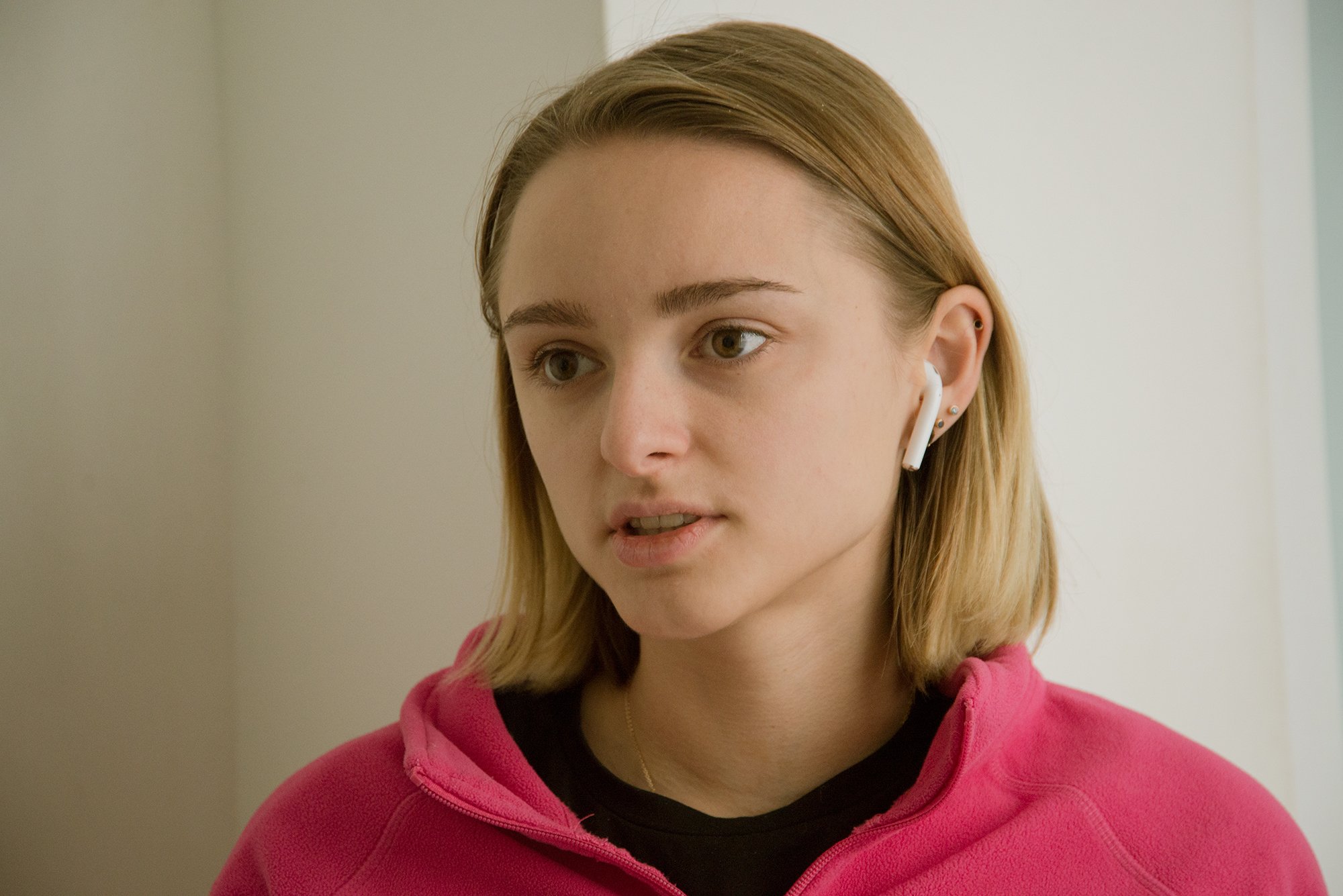
Photo: Rubryka. Roksolyana Shmylo
One of the stages of rehabilitation is learning to use the prosthetic. If it is an upper limb, the patient works on fine motor skills and learning to use a prosthetic in their daily life. A patient with an arm amputation needs to learn to do basic things: open doors, tie shoelaces, cook food, etc. If a leg is amputated, it is essential for the patient to get used to walking without crutches or a wheelchair, first on a sleeve, and then using only the prosthetic.
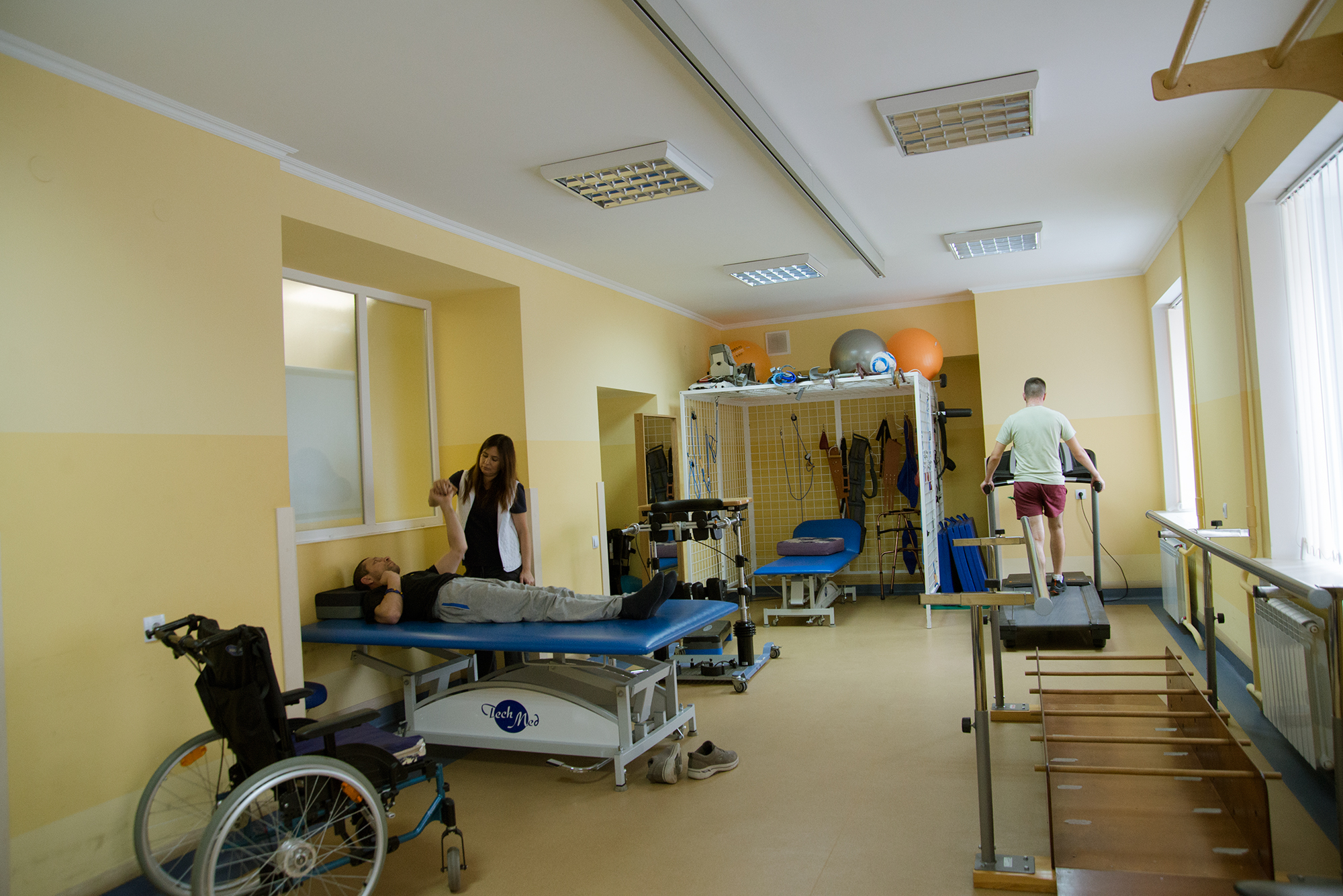
Photo: Rubryka
"We work with two pensioners from Bakhmut and Kherson injured due to the war. It is challenging for them to get used to prostheses. Even elementary things like choosing shoes are stressful for them," Shmylo continues. "After all, shoes for a prosthetic are not about comfort but only about aesthetics. When they realized this, they were sad, even depressed, for a long time. That is why comprehensive rehabilitation is necessary — not only physical but also psychological."
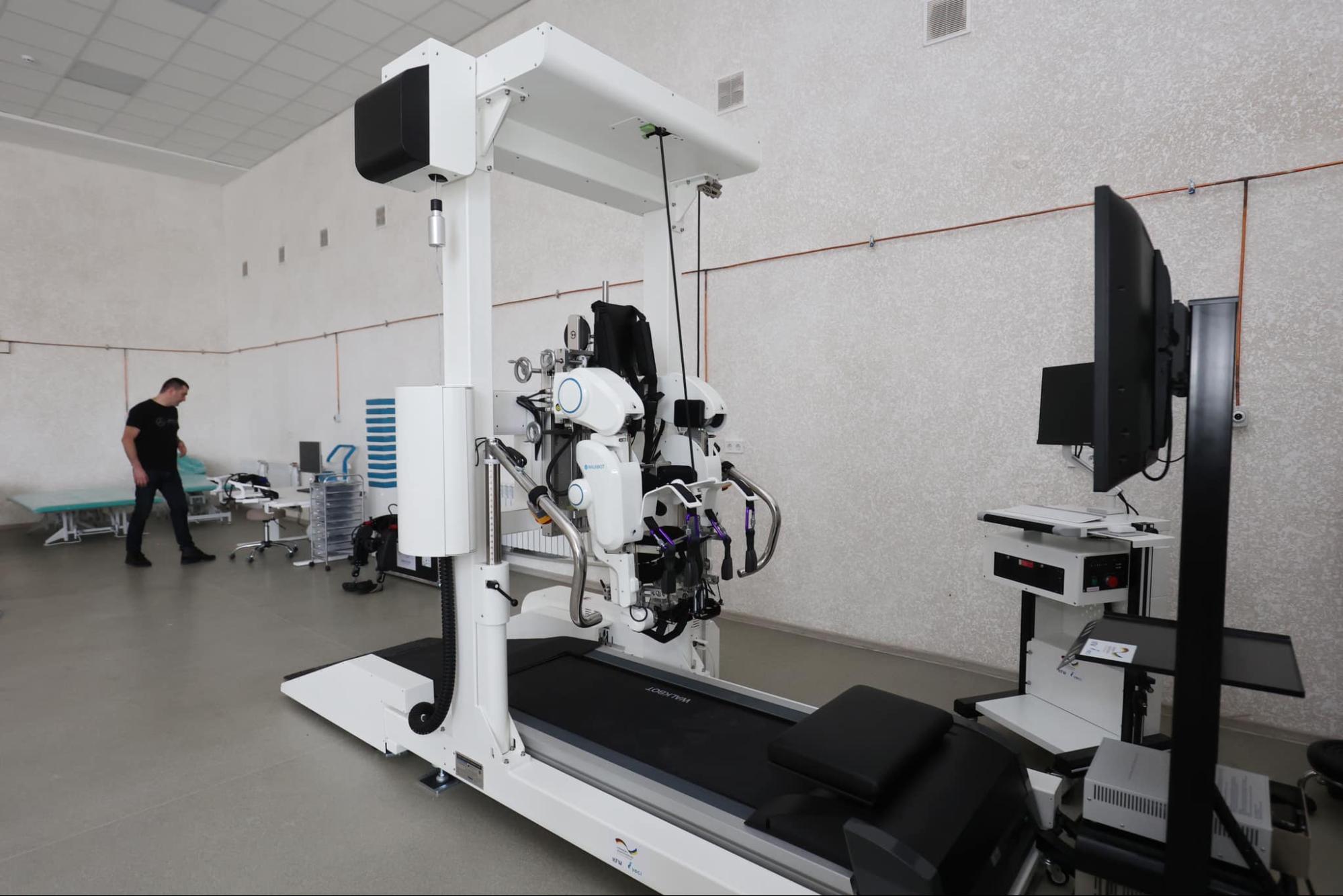
Photo: UNBROKEN Facebook page. Walkbot robotic walking recovery system
"We are supported because we ask a lot"
Yakubechko is convinced that to spread awareness about their work such projects, it is necessary to be vocal.
"Our medical institution supports many people because we ask a lot. We do this so our patients have better services and new opportunities, methods, experience, and knowledge," Yakubchenko tells Rubryka. "The Malta Service finances the prosthetic workshop itself with the support of the German government. We invite new specialists — they come and help us. We speak loudly about ourselves: how we collect money for prostheses for the defenders, we talk about these boys, our patients."
The process is financed from charity funds. In September 2022, Nezlamni and the Dobro.ua platform started a fundraiser aiming to collect $2.7 mln for bionic prostheses for the military. With these funds, 50 such prostheses can be made.
As of April 14, 2023, it has collected more than $820,000. More than 20,000 benefactors have supported the fundraiser.
Does it really work?
"Ukrainians work for the benefit of Ukrainians"
The Nezlamni Center shares the stories of its patients — soldiers who lost their limbs during hostilities defending Ukraine's independence – who were, and remain unbreakable.Olexander Morskyi is a 46-year-old naval border guard who served in Mariupol and remained there after retirement. From the beginning of the full-scale invasion, he defended the city from the russian troops.
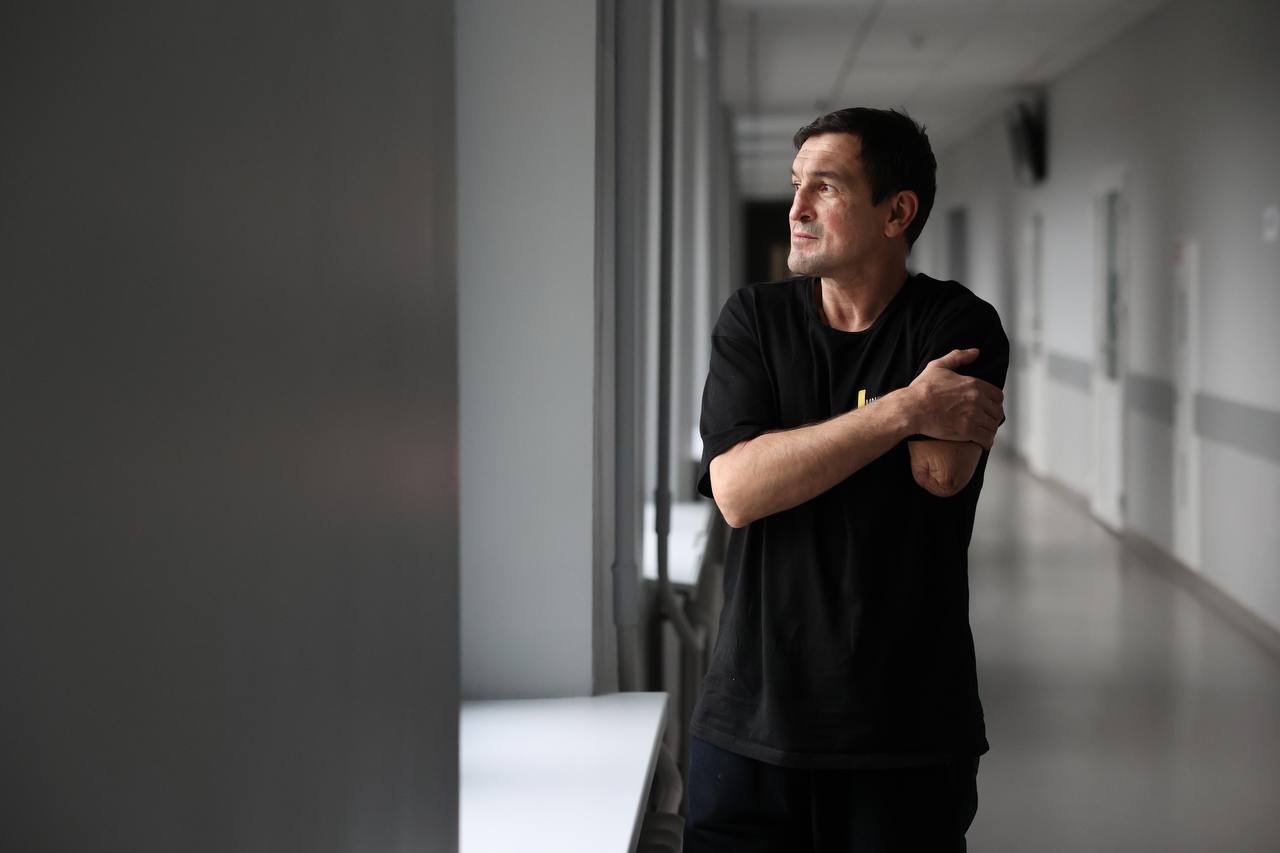
Photo: press service of the Nezlamni centre
During the execution of a combat mission, Morskyi's boat was hit by an enemy missile. The soldier says that it was a miracle that he survived, but his hand was severely injured. It had to be amputated in the Azovstal shelter hospital during the seige of Mariupol to save the soldier's life. There, he underwent a seemingly-endless two months under shelling, and another two in captivity in Olenivka prison after being captured by the Russian army. The soldier was the first of those who were exchanged. He says he felt at home when he saw the Ukrainian flag and heard his native language.
He was offered the chance to go abroad for prosthetics but chose the Nezlamni National Rehabilitation Center. Prosthetists, rehabilitators, and psychologists worked with him for several months.
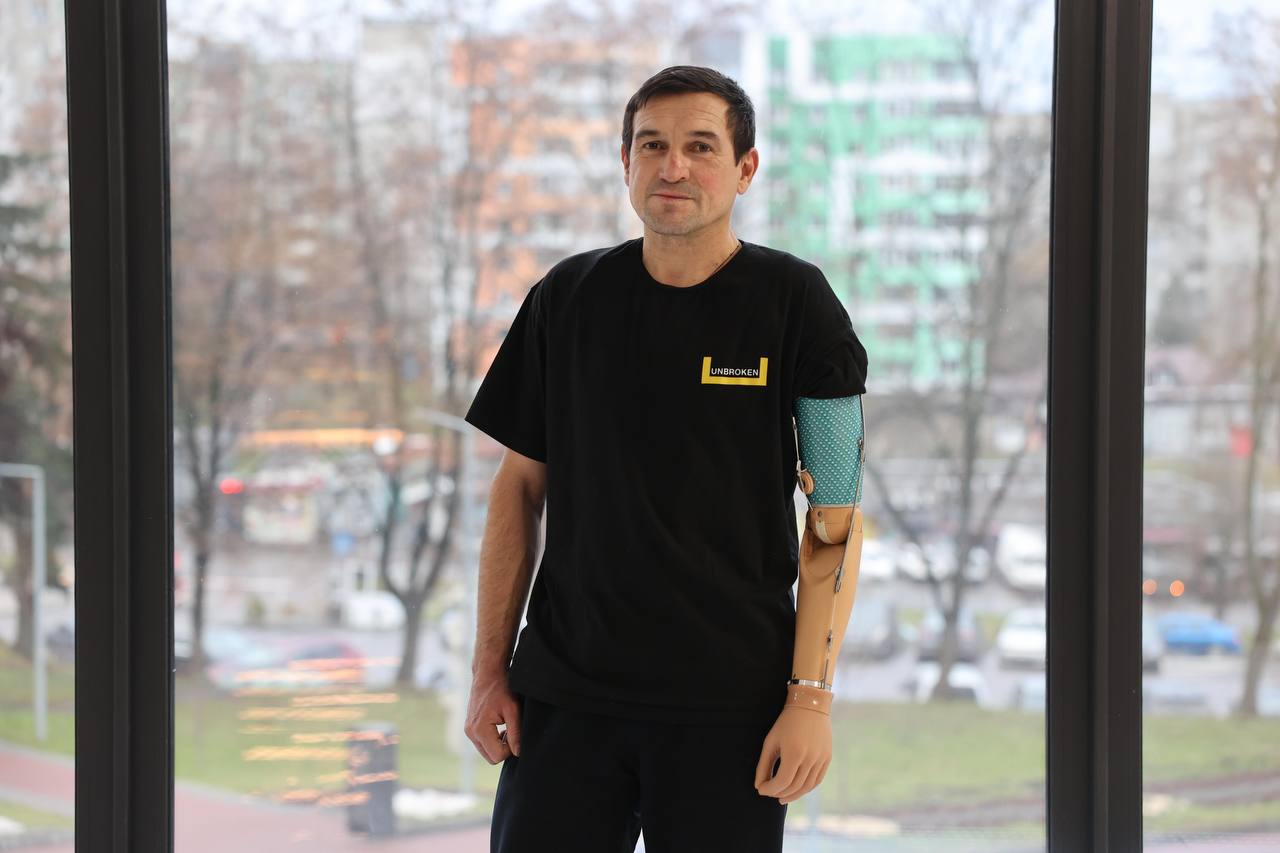
Photo: press service of the Nezlamni center
Morskyi recently received a myoelectric hand prosthetic. He can now lift and carry objects using his right arm and back muscles. The injured veteran says that it is important for Ukraine to develop its own domestic capacity in prosthetics.
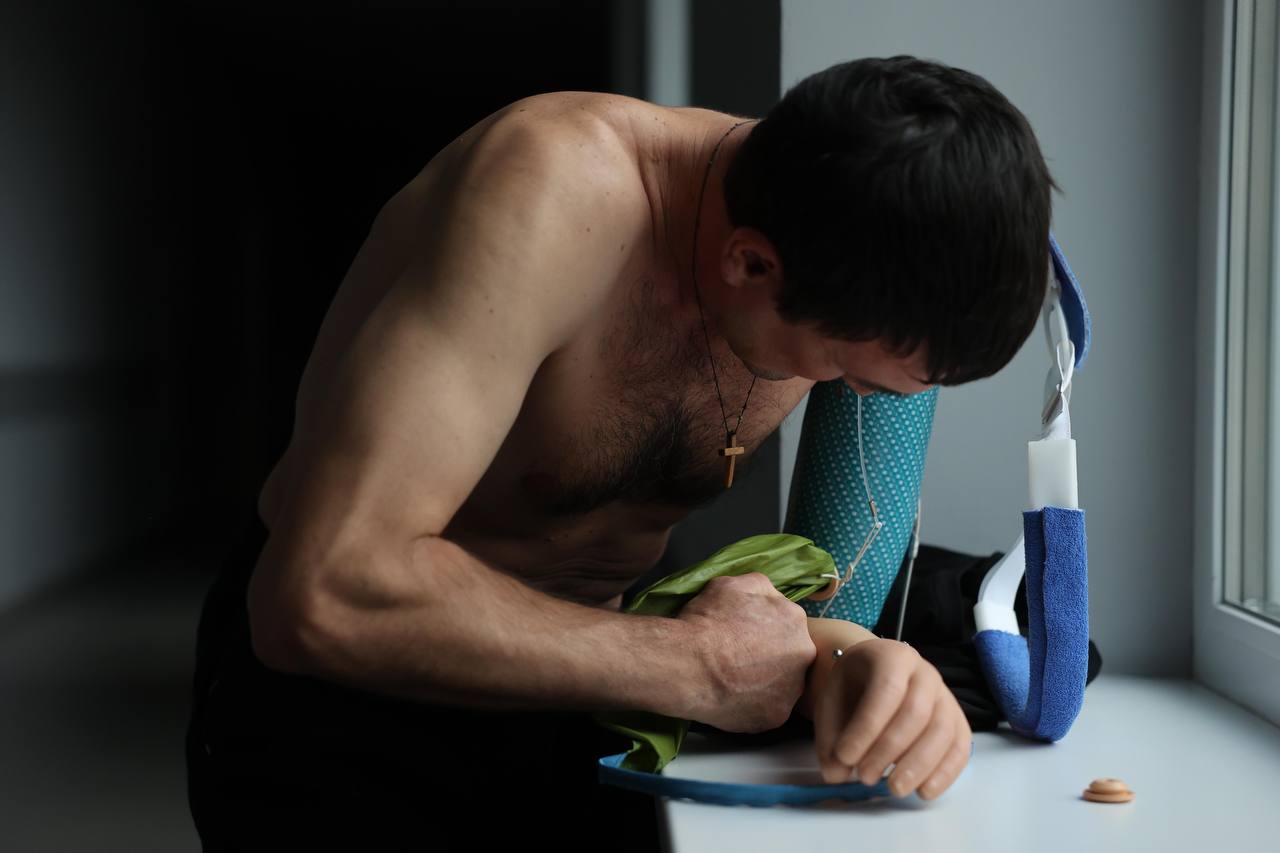
Photo: press service of the Nezlamni center
"It is no worse, and in some cases, even better. You can always ask for advice if something is broken. It's all here, on the spot," says Morskyi.
He bandaged the wound with his last strength
Yehor is a 19-year-old defender of Ukraine. He joined the army for contract service even before the start of the full-scale invasion, when he had just come of age. After February 24, 2022, he was assigned to the front. During fierce battles, he stepped on an land mine.
He says that his greatest fear was being captured. That's why he didn't even want to apply a tourniquet to stop the bleeding immediately. But the thought of his parents made him fight for his life. He bandaged the wound with his last strength and was evacuated by his comrades.
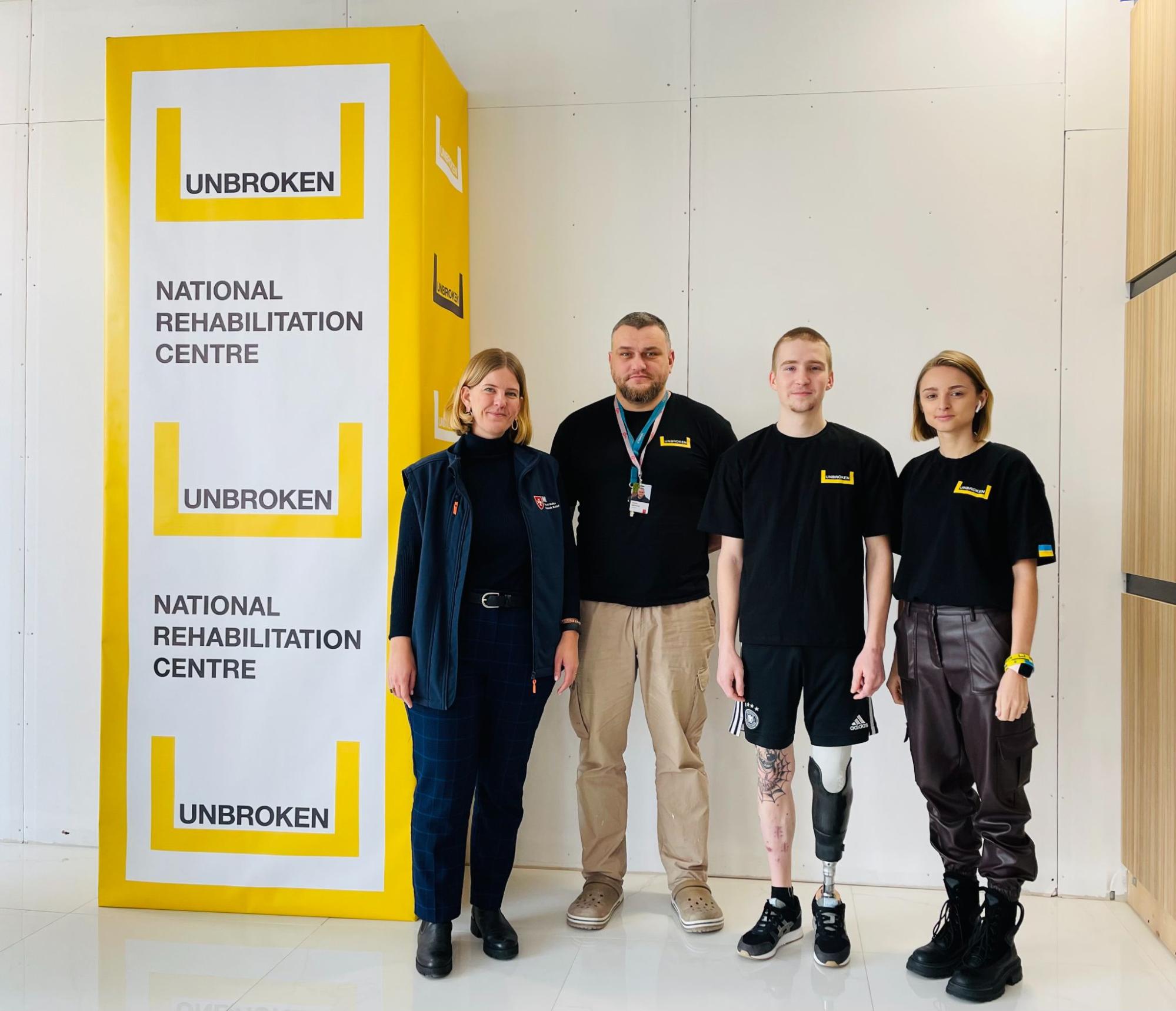
Source: press service of the Nezlamni center
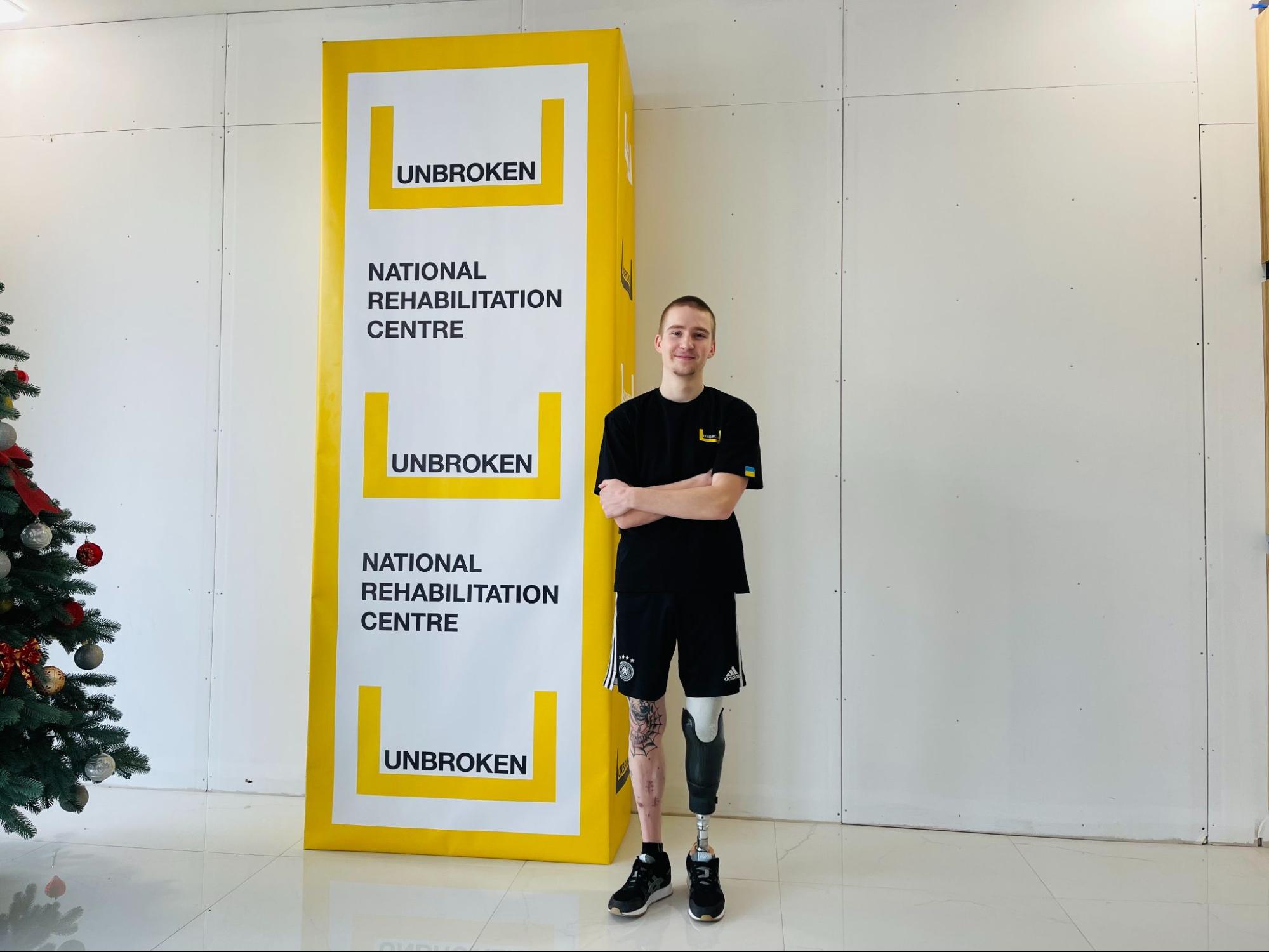
Source: press service of the Nezlamni center
Before entering the Nezlamni Rehabilitation Center, the soldier was treated in seven medical institutions. But it was in Nezlamni that he received a prosthetic and support in rehabilitation. After recovery, the soldier plans to return to the front again.
The experience of others
Rehabilitation of military personnel who lost their limbs during hostilities is a problem not only relevant in Ukraine. Key to its solution is the coherence of the work of doctors and a straightforward, consistent process for patients, where they will be supported and helped at all stages. But life goes on even after undergoing rehabilitation in the hospital.
In Akron, Ohio, in the United States, veterans found a way to cope with trauma and return to a more normal life after losing a limb: there, they founded a sports softball team, where all 11 players are warriors who went through the war, psychological and physical injuries and loss of limbs. They help each other cope with war trauma and combat isolation by playing ball as a team. You may learn how it works here.








